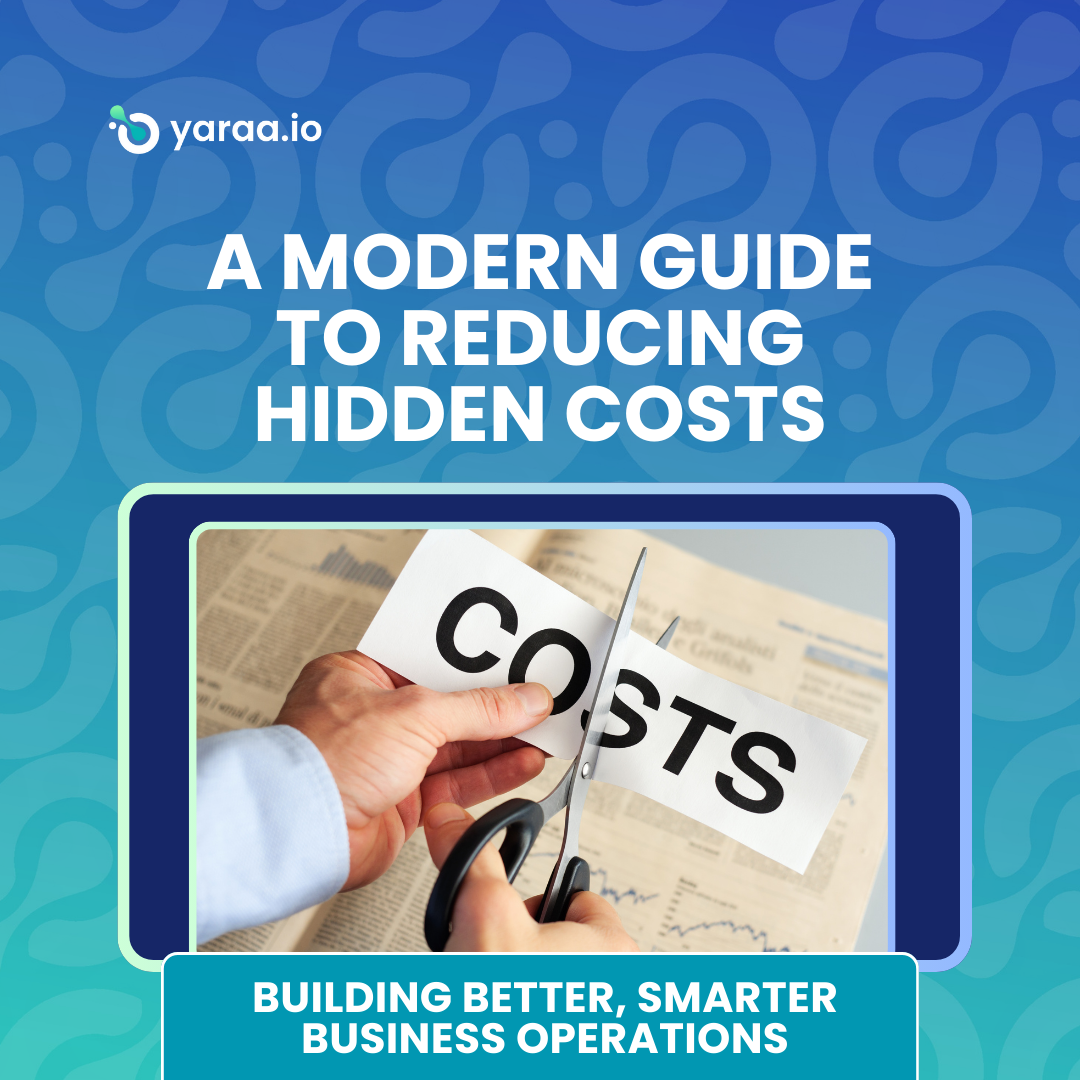
When people think about controlling business costs, they often look at the obvious numbers like salaries, inventory, rent. But if you dig a little deeper, you’ll find that some of the biggest drains on company resources are not listed clearly on any balance sheet.
Introduction: The Cost of Inefficiency No One Talks About
Hidden costs, things like slow approvals, duplicate purchases, vendor mismanagement, and manual workflows quietly eat away at profitability, month after month. And because these issues happen quietly, they’re often accepted as “just the way business works.” But what if there’s a smarter way?
In this article, we’ll walk through how recognizing and addressing hidden inefficiencies can transform operations, unlock real savings, and set your business up for faster growth.
Section 1: Spotting the Hidden Costs in Your Operations
Not all costs are visible. In fact, some of the most damaging ones show up not as a line item, but as lost time, missed opportunities, and unnecessary frustration.
Maybe your team spends extra days waiting for approval signatures, which delays important projects. Maybe two departments unknowingly place separate orders for the same supplies, wasting both time and money. Or maybe you scramble for last-minute vendors when preferred suppliers fail to deliver, leading to emergency spending at inflated rates.
These small operational hiccups don’t seem critical on their own. But multiplied across an entire company over time, they create major financial leaks.
Becoming aware of these inefficiencies is the first step toward creating a more resilient and cost-effective organization.

Section 2: How Smarter Procurement Drives Growth
Once you start recognizing operational bottlenecks, the next question is: how do we fix them?
The answer lies in smarter procurement — building a system where purchasing decisions are streamlined, vendor relationships are managed proactively, and approvals are fast and transparent.
Imagine a world where your team can request, approve, and track purchases in one place. Vendors compete to offer their best terms. Management has real-time visibility into spending trends, enabling better budgeting and forecasting.
When procurement becomes smarter, businesses don’t just cut costs. They unlock new opportunities for growth.
Faster purchasing cycles mean quicker project launches. Better vendor management means higher-quality products and services. Real-time insights mean more strategic decisions, not just reactive ones.
Growth doesn’t come from doing more work. It comes from building better systems that let your team do their best work without friction.
Also Read: Top 5 Reasons to Choose Cloud-Based Procurement Software
Section 3: Real-World Ways Companies Save with Better Operations
Let’s ground this in reality with a few examples.
A mid-sized construction company realized that manual processing of purchase orders was costing them more than they thought. Each delay added late penalties and expensive rush shipping costs. By automating their procurement workflows, they cut administrative costs and saved thousands each quarter — all while speeding up their project timelines.
In another case, a retail company had no consistent way to evaluate supplier performance. Poor-quality vendors kept winning repeat business simply because there was no visibility into past issues. By implementing a smarter vendor management process, they improved product quality and negotiated better contracts, which had a direct impact on their bottom line.
The common thread across all these stories isn’t flashy technology or massive change. It’s small but strategic improvements — spotting inefficiencies, tightening up processes, and letting smarter systems do the heavy lifting.
Every business, regardless of size or industry, has hidden opportunities like these. It’s simply a matter of finding and acting on them.

Section 4: Looking Ahead: The Future of Business Operations
The future of operations isn’t just about doing things faster or cheaper. It’s about becoming agile — able to adapt quickly, make smarter decisions, and continuously improve without unnecessary effort.
We’re entering an era where real-time data drives procurement choices. Where approval workflows are automated and customizable. Where vendor relationships are not just managed, but optimized based on performance insights.
Companies that embrace agile, automated, and data-driven operations now will have a major advantage tomorrow. They’ll move faster, outpace competitors, and create more resilient businesses that thrive even in unpredictable markets.
You don’t have to overhaul everything overnight. Even simple shifts — like centralizing supplier data or streamlining internal approvals — start to build the foundation for a smarter, stronger future.
Conclusion: Your Operations Are Your Competitive Advantage
Hidden inefficiencies cost more than just money — they cost time, momentum, and opportunities for growth. But with the right mindset and smart systems in place, business operations can transform from a necessary overhead into a true competitive advantage.
It starts with seeing where things can be better. Then it’s about building smarter processes that empower your teams, strengthen supplier relationships, and make every dollar work harder.
If you’re thinking about how your business can operate better and grow smarter, you’re already on the right path. Visit – Yaraa.io Today
